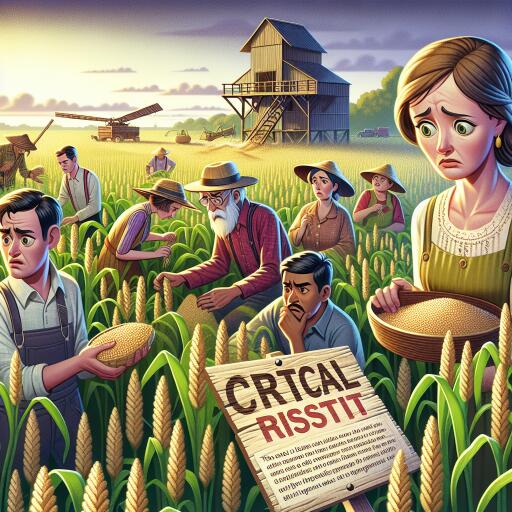
Farmers Scramble as Staple Crop is Threatened by Unexpected Factors—Here’s What’s at Stake
Consumers may soon find certain products becoming scarce as unexpected weather patterns disrupt agricultural processes, posing a serious threat to staple crops. This vulnerability becomes evident as unusual weather patterns challenge the stability of our food sources, as seen recently in California’s strawberry fields.
Reports indicate that nearly two inches of rain have drenched the areas of Santa Maria and Oxnard, key strawberry-producing regions in California. This deluge halted production for almost three days, rendering some of the strawberry crops unsellable.
The inundated fields have led to quality issues with strawberries, including bruises and decay, severely impacting the market. Demand for strawberries now surpasses supply, propelling distributors to issue warnings about potential scarcity and delays in deliveries.
However, rain isn’t the sole player in this story of agricultural unpredictability. Across the American Southwest and beyond, changing weather patterns usher in droughts and foster bacterial outbreaks such as E. coli and fungal infections among crops, further complicating farmers’ challenges.
Consumers face the real possibility of seeing familiar products dwindle in grocery stores. This shift not only threatens the availability of everyday food items but also endangers farmers’ livelihoods. As weather-induced crop changes look set to become more frequent, the risk to agricultural income grows.
The environmental implications are even more concerning. The primary driver behind these disruptive weather patterns is the intensifying heat of our planet. Climate change, spearheaded by this warming, manifests not only through erratic weather but also through critical threats such as species extinction.
To combat these shifts, a collaborative effort between researchers and farmers yields innovative adaptations. In Florida, for instance, the development of a flood-resistant strawberry variety illustrates proactive measures to bolster crop resilience.
Additionally, exploration into regions experiencing less climate-induced stress offers potential new grounds for crop cultivation, promising more stable agricultural environments. Yet, these stopgap solutions offer only temporary relief.
Future resilience requires concerted efforts addressing global warming at its core. Comprehensive strategies aimed at curbing planetary temperature rise promise the most effective defense against ongoing and future agricultural challenges.
Understanding and addressing the complex interplay between climate change and agriculture is crucial. Engaging in discussions on pivotal climate issues empowers communities to develop collective solutions, ultimately striving towards a more secure and abundant future for generations to come.





Leave a Reply